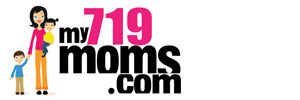Most of us have a medicine cabinet or a plastic bin where we keep our Tylenol and Tums. It is almost always in an out of reach space where our kids cannot get to it. However, what about the meds we keep in our bedside table or in the fridge? What if we have faith in the child safety tops and keep our meds in the bathroom drawer? About 1,100 calls are made to Poison Control regarding children every day!
Safe Kids Worldwide and the American Association of Poison Control Centers released a study showing what what types of medicines are exposing kids to poison. The first 10 medical cases are deemed “unintentional-therapeutic exposures.” This means that the kids are given medicine by a caregiver, but they get too much or it not the correct kind of medicine. The second category is called “unintentional-general exposures.” This would include medicine that is not given intentionally to a child. It could be anything from a child finding medicine and taking it or somehow ingesting meds not meant for children.
Here are the top five for “unintentional-general exposure” for kids between 1 and 4-years-old:
- Ibuprofen
- Multiple Vitamins – Experts warn parents not to tell kids “vitamins are just like candy” because many of them will take too many if they get their hand on them.
- Diaper Care and Rash Ointment
- Acetaminophen Alone
- Antihistamines: nasal sprays, eye drops, Claritin
Here are the top five for “unintentional therapeutic exposures” for kids between 1 and 4-years-old:
- Ibuprofen
- Other Antihistamines
- Acetaminophen
- Systemic Antibiotic Preparation
- Diphenhydramine
You can read the report to find out more about these drugs and how to keep your kids safe. It is important to read labels and if you have questions call your doctor, nurse, or pharmacist. It is better to be safe than sorry when it comes to kids and meds.




